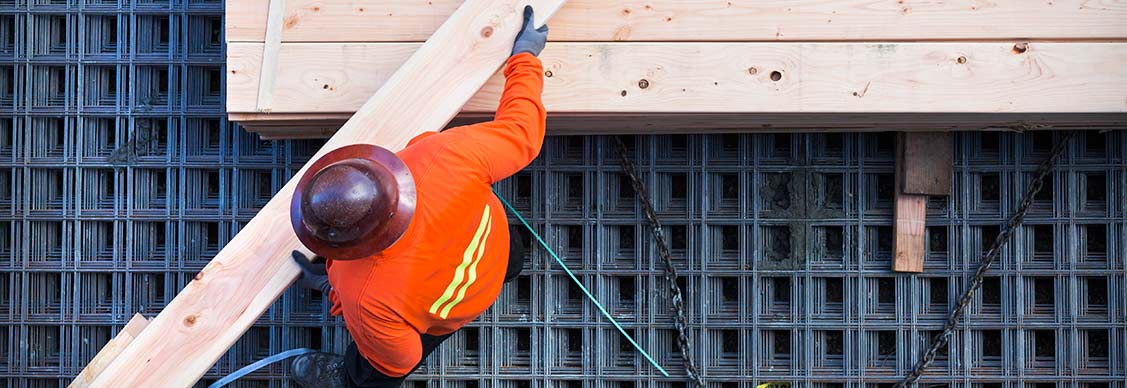Why timber buildings are on the rise
Recent projects are laying the foundation for making timber construction more mainstream
Buildings made from timber have long been billed as a route to addressing the real estate industry’s net-zero carbon emission goals.
Recent developments suggest the pace is picking up, with projects becoming more ambitious.
Take a six-storey academic building in Singapore being constructed with mass engineered timber. When completed next year, it will be one of Asia’s largest wooden buildings.
A recently completed 20-storey timber cultural center and hotel in Swedish eco-town Skellefteå is primarily made of glued laminated timber (glulam) and cross-laminated timber, and can withstand a higher load-bearing capacity than both steel and concrete, while offering plenty of environmental benefits.
In the U.S., a 25-storey apartment building in downtown Milwaukee will take the title of the world’s tallest hybrid mass timber building when it opens in July 2022.
“Mass timber buildings offer a potential blueprint for greener real estate construction projects, though there’s still some way to go before the use of recyclable materials enters the mainstream,” says Sam McCrea, Solutions Lead, Energy & Sustainability Services, Asia Pacific, JLL.
The increased efforts come amid a growing urgency for real estate and the built environment to address climate change. This month at COP26, the United Nations’ climate summit, there was a specific focus on cities, regions and buildings for the first time.
“The challenge is to shift traditional mindsets into one that believes in the power of creating reusable industrial grade materials and reducing the number of raw materials used,” says Arthur Huang, founder & CEO of Taiwanese architectural firm Miniwiz, during a virtual panel discussion on the Future of Sustainable Spaces.
Looking for more insights? Never miss an update.
The latest news, insights and opportunities from global commercial real estate markets straight to your inbox.
Scalability remains an issue
Major real estate developers are leading the charge in lowering the embodied carbon footprint of buildings, which refers to the carbon emissions generated from a building’s construction materials, the building process, or the fixtures and fittings.
“On top of managing their operational efficiencies, developers have been finding ways to design and construct in a more sustainable manner, such as avoiding carbon-intensive materials like steel or concrete,” says McCrea during the Future of Sustainable Spaces panel discussion.
But one of the main stumbling blocks has been the lack of access to affordable sustainable materials, which requires a coordinated effort between different stakeholders.
Building partnerships with sustainable suppliers — supported by investments from the private sector, the construction industry and governments — will make the use of sustainable building materials commercially viable and more accessible to everyone, says McCrea.
Green benefits and costs misunderstood
Recent timber building developments around the world are helping to alleviate uncertainty over the potential costs and benefits of green real estate projects using recyclable materials.
“People don’t realize that the overall cost of the project can drop if you use the right materials,” says Parag Shinde, Group Energy and Sustainability Manager, Property NSW, during the Future of Sustainable Spaces panel.
“More needs to be done on the construction and material side of the spectrum, rather than the operations.”
For instance, the Swedish development shaved a year off the time for construction and reduced the number of truck deliveries by nearly 90 percent. Opting for timber harvested from trees within a 60-kilometer radius, instead of other conventional materials, made this possible.
At the project in Singapore, building materials are sourced, prefabricated and assembled on-site, reducing dust, debris, and noise pollution during construction. Compared to traditional building methods, it is also quicker and less labor-intensive.
According to estimates from Huang, sourcing all building materials from within 100 kilometers of a building site can potentially generate a further 30 percent to 40 percent savings on transportation costs.
With the built environment accounting for 40 percent of global carbon emissions, the real estate industry needs to take on a more active role in reducing the environmental impact by pursuing recyclable materials for building projects.
“There is a bit of complacency in terms of not truly understanding the urgency or the potential upsides,” says Ruben Langbroek, Head of Asia Pacific, GRESB, speaking on the Future of Sustainable Spaces panel.
However, he believes more companies are starting to see the benefits of using recyclable materials in terms of the positive environmental, social, and financial outcomes, which will lead to less inertia and more action in the future.
